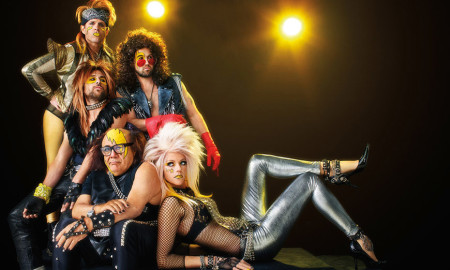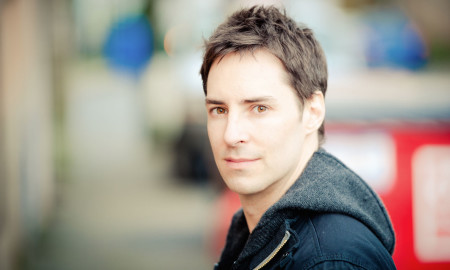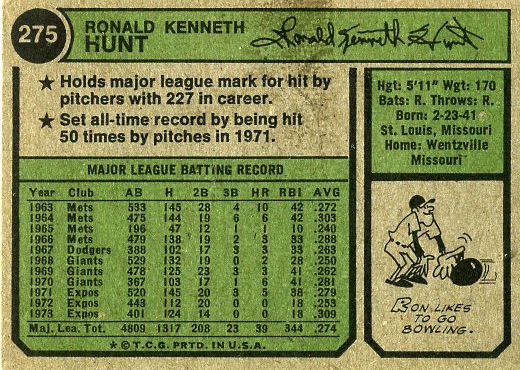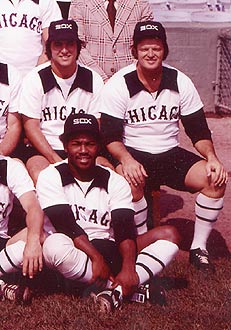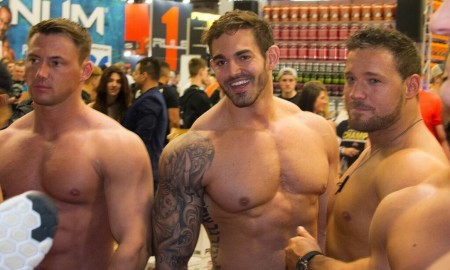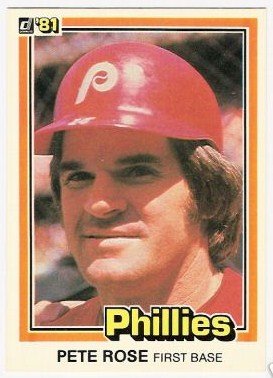

Dan Epstein’s grand slam of a book catches how baseball changed – and changed everything — in 1976.
Double-play! Dan Epstein’s first book about ‘70s baseball, Big Hair and Plastic Grass, captured the pastime the way it used to be played back in the day game, as well as capturing the zeitgeist of a nation in turmoil and transition (two words: polyester).
In the course of his research for that book, Dan discovered the historic awesomeness of the 1976 season in particular. It seems the baseball happenings of that year could fill more than a mere chapter.
The result: Stars & Strikes, rounding home with a raw and righteous/outa sighteous season of high drama (comedy too). We celebrate the nation’s bicentennial while striking out Nixon and Viet Nam. Disco was not yet called foul, a quirky young man who resembled Big Bird took flight, and the major leagues went Major League. Not surprisingly, that was also the year of the gorgeously cynical The Bad News Bears. America, finally feeling its oats again, quoted that flick: You can take your apology and your trophy and shove it up your ass! Just wait until next year!
Here, our good buddy Dan gives us a big 10-4 on the book (it’s a hit!) while he catches us on the flip-flop.
Culturally, 1976 really appeals to me because it’s such a transitional year in music, politics, and in the sense that America was kicking loose the last vestiges of the Nixon administration, all the rage and the paranoia and that whole bummer of the early ‘70s.
[The attitude was:] “That’s all behind us! Let’s put on our boogie shoes and paint some fire hydrants red, white and blue and really enjoy!”
There was such a sense of hopefulness and togetherness that I had not seen in my lifetime in this country. It was a moment of “we’re all in this together.”
Yet the actual Bicentennial itself was ultimately a bit of a letdown, right?
It was so hyped. There was such a glut of Bicentennial souvenirs manufactured. None of them became valuable and most of them were not very attractive. There was a real interest from Americans, but at the same time, it was so over the top and so oversaturated, with immense, lavish, over-the-top celebrations. By the time July Fourth actually showed up, I think people were ready to let it go.
What was the team to watch that season?
The team to watch was the Cincinnati Reds. They had already won the 1975 World Series, with basically the same group of guys. It was the most intimidating lineup in baseball at the time. It was pretty much a foregone conclusion that they were going to come close if not totally repeat their success.
The Philadelphia Phillies were not in post-season since 1950, but yet, in time for the Bicentennial, they got it together. It really came together for them that year.
The Kansas City Royals made the playoffs for the first time in their history. They were an expansion team in ’69.
The New York Yankees had not been to a World Series since 1964. They had a lot of pretty dismal seasons, and George Steinbrenner came back after being banished from baseball for two years, along with Billy Martin. They were great right out of the gate.
It’s interesting that the Yankees became great at a time when the whole country was ready to write off New York City. They become a huge source of pride for the city. A comeback.
The breakout star of 1976 was Mark Fidrych, nicknamed “The Bird.” His story sounds like fiction, except for the fact that it was all true.
The Tigers were not entirely sure what to do with him. They knew he was very good. From Opening Day until the middle of May, he only gets into two games. Another pitcher gets sick, and he gets to be a starting pitcher. It’s right out of a Hollywood script. He pitches phenomenally well.
Not only is he a great pitcher, he is very quirky and charismatic. He is talking to the baseball, and he’s dropping to the mound to smooth out the cleat marks that other pitchers have left, shaking the hands of his infielders every time they make a good play.
There is a pure joy that is radiating from him. That was a big part of his appeal. It was a time of free agency and players demanding more money and not being loyal to their team, and here is this guy who looks like a 6’3” Little Leaguer. He’s just completely stoked to be out there. He’s playing for the rookie minimum [salary].
By the end of June, he is a national phenomenon. Yet he seems to be unphased by it. He’s not cynical or super flamboyant. He’s not boastful. He just loves to go out there and throw a ball. It resonated very deeply with baseball fans and non-baseball fans alike. He was like a rock star.
1976 was his lone full season. It was this brief, beautiful moment, and then it was over. He didn’t stick around the game. He just left and went back to Massachusetts and bought himself a farm.
Team owner Bill Veeck also continued to make waves as a colorful character that year. How did he possibly top himself?
Veeck returned to Chicago at the end of ’75. He was a really beloved character in Chicago. His return was a huge event. He was gregarious, down to earth; he liked to sit in the stands and drink with fans. He had an ashtray built into his wooden leg. This was not your stereotypical, uptight, patrician team owner. When he bought the White Sox, they were in a lot of trouble. They were a terrible team and they were hemorrhaging money. They weren’t drawing anybody to the park.
Veeck realizes that he does not have a lot to work with. So he comes up with all of these promotional ideas. This has always been a big part of Bill Veeck’s game plan. He was a big one for off-the-wall promotions, anything that would get some press coverage.
He has beer-crate-stacking competitions, ethnic nights [his ballplayers running out onto the field in sombreros for Mexican Night], and giveaways. He was really the king of this stuff.
He designed a whole new uniform for the White Sox. They have collars. He also designs Bermuda shorts. To this day, some fans believe that the White Sox played an entire season or more in those shorts. They were traumatized, like a false memory. In actuality, they only played three games. The amazing thing is that the White Sox won two of the three games that they played in shorts.
Pete Rose was another one to watch in ’76, as usual.
Pete Rose had a really good year in 1976. Pretty much every year in the 70s, Pete Rose had a very good year. You can’t talk ‘70s baseball without talking Pete Rose.
The Reds just dominated the Yankees in the World Series. Pete Rose was great at getting into players’ heads.
What was the state of stadiums in ’76? A pretty sorry state, right?
1976 had an interesting mixture of ballparks. You still had the old places like Tiger Stadium and Wrigley Field. Then you have the concrete donuts that are covered in Astroturf, like Veterans Stadium in Philadelphia and Royals Stadium in Kansas City.
1976 is the year of the only rainout in Astrodome history! That’s one of my favorite facts. There was terrible flash flooding in the area before a game.
Yankee Stadium comes back to life after two years of renovation. They really change a lot of the character of it.
San Francisco nearly lost the Giants at the beginning of 1976. They were broke and their owner was desperate to sell to anybody.
The Giants had the worst attendance in the National League. Part of the reason is that Candlestick Park was a miserable location for a ballpark. They did nothing to promote the games and nothing to encourage people to come out. It also had a reputation for serving literally rotten food.
Ted Turner’s meteoric rise began that year too.
Ted Turner was a visionary in a way that nobody really understood at the time. He was the owner of a UHF station in Atlanta that most of the city couldn’t even pick up. These were the days before cable.
He has the idea of turning this UHF station into a satellite network that could be beamed all over the country. He realizes that broadcasting Braves games could be a big help with credibility. He needed to keep his relationship with the Braves going in order to expand his station.
The prevailing wisdom was not to televise too many games because you want people to come out to the ballpark. Turner was doing just the opposite. He had a much bigger goal in mind.
Soon, there were Braves fans all over the country. They were a terrible ball club, but Turner made the stadium a happening place where people wanted to come.
What TBS eventually became changed baseball’s relationship with television.
The biggest change of the year is that players suddenly and finally got control of their careers.
The reserve clause is revoked and now if players don’t sign a contract with their team, they can play out their option and negotiate with other teams and get paid whatever the market will bear.
The effect of this is mammoth. It will completely change the way teams are built. It will completely change the economic structure of the game. Everything we have today, from hyper-inflated players’ salaries to the multi-billion-dollar cable deals, all come from 1976. This is where it all starts.
How do you feel about this change?
I don’t like what the game has become. I don’t like watching guys who are multimillionaires playing while knowing that next year they will not be on the same team.
But if baseball is raking in the cash, then players do deserve an equitable part of the pie. Up until 1976, they weren’t getting that. I think that free agency was absolutely the morally right path to go on, but it became a Frankenstein monster.
Order Dan’s epic book here. And be sure to read his other tome to baseball’s entire ‘70s decade, Big Hair and Plastic Grass.



